I - Background #
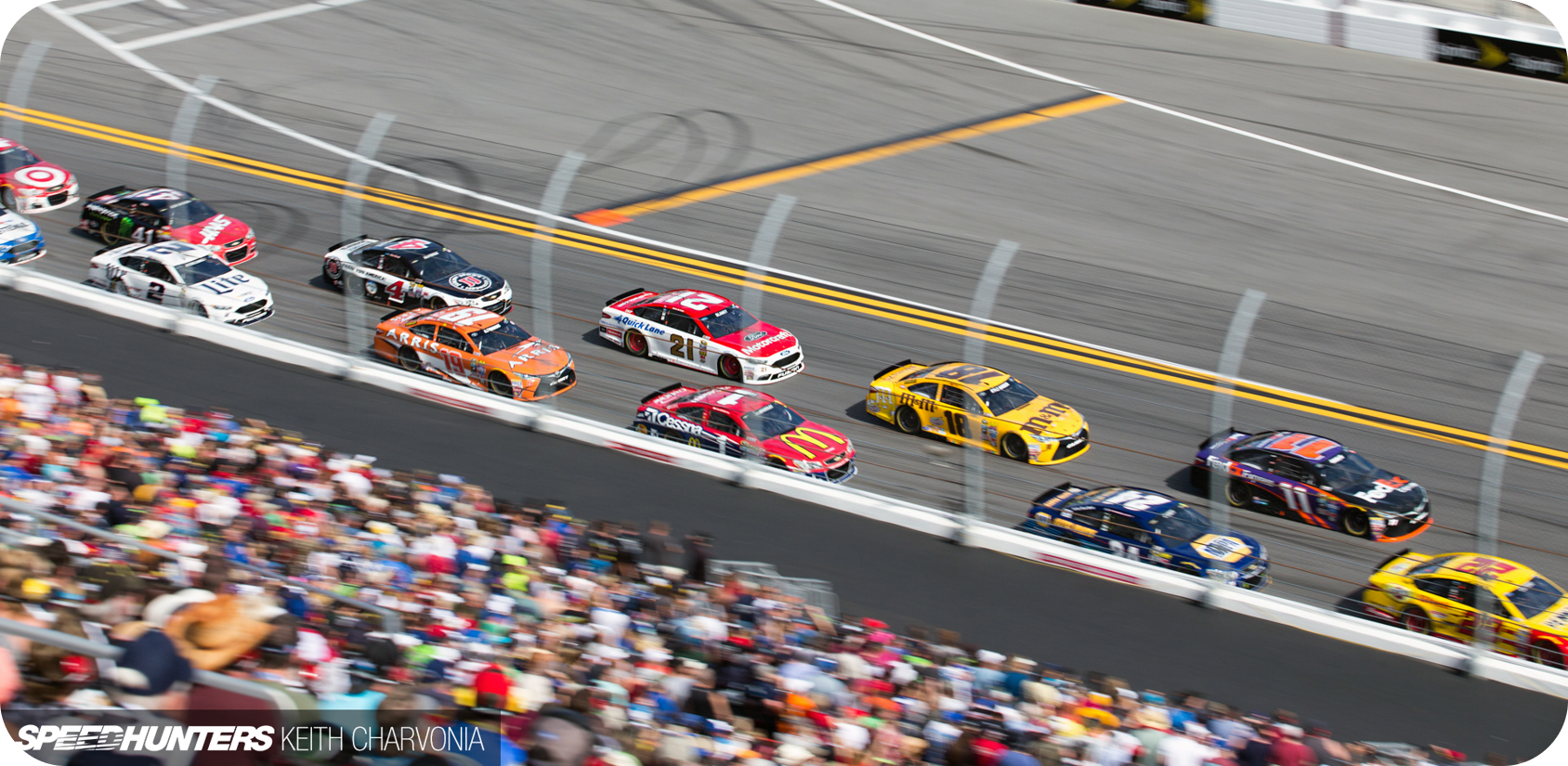
Taking the green flag at the 2016 Daytona 500.
Introductory Thoughts #
The NASCAR CUP Series races roughly 38 times a year, roughly a race every weekend of the season. With 10 races to go, the playoffs start. In this grueling stretch, drivers need to either win or score sufficient points to avoid elimination. Eventually, only a single champion remains.
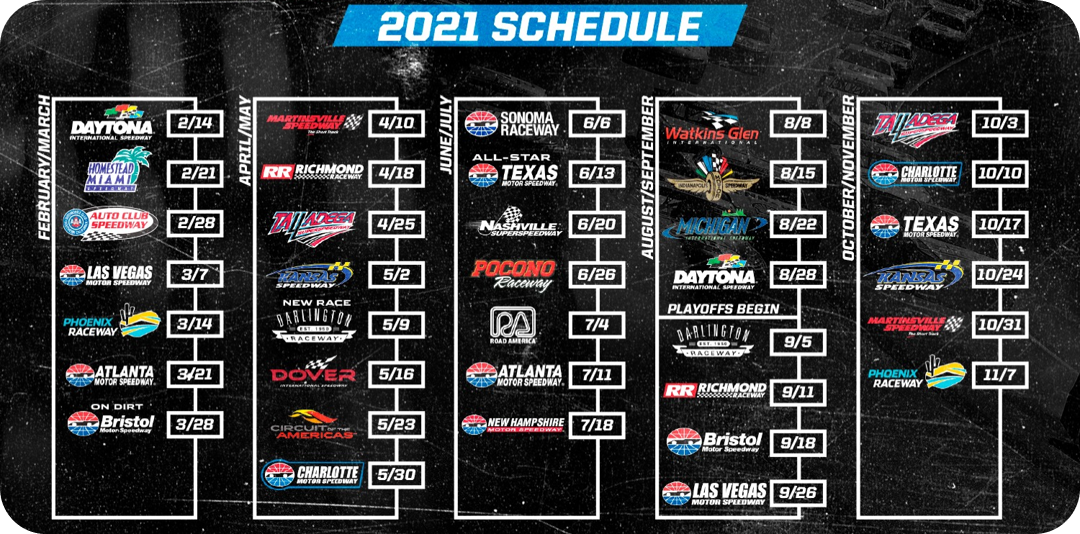
2021 Race Schedule.
Due to the impressive speeds involved at many of these racetracks (often 200mph+), performance is heavily tied to aerodynamics performance. Therefore, to maintain competitiveness throughout the season, the onus is on the aerodynamics engineers to develop the car at a faster rate than the competition.
Competition #
In a field of 18 teams and 30+ cars, Team Penske strives to always be on the competitive end of the spectrum. Team Penske wields 3 full-time cars, with an additional sister car (Wood Brothers #21) that receives engineering support. The aerodynamics group serves as the research & development arm of the race teams, continuously seeking new avenues to improve cornering and straight-line performance.

The 3 Team Penske cars: 2, 12, and 22.
The Sport #
To the untrained eye, most of the NASCAR tracks seem to be very similar, However, the specific configuration has a large influence on the type of racing that occurs, which in turn influences the type of racecar that needs to be built.
The major categories are split up into the following:
Superspeedway - These tracks are 2.5+ miles in circumference, and defined by their massive straights and long, banked corners. The cars are fundamentally drag and power limited. Cars race in close proximity and never lift off the throttle. Therefore, success is a matter of minimizing drag and using ’the draft’ to ones advantage.
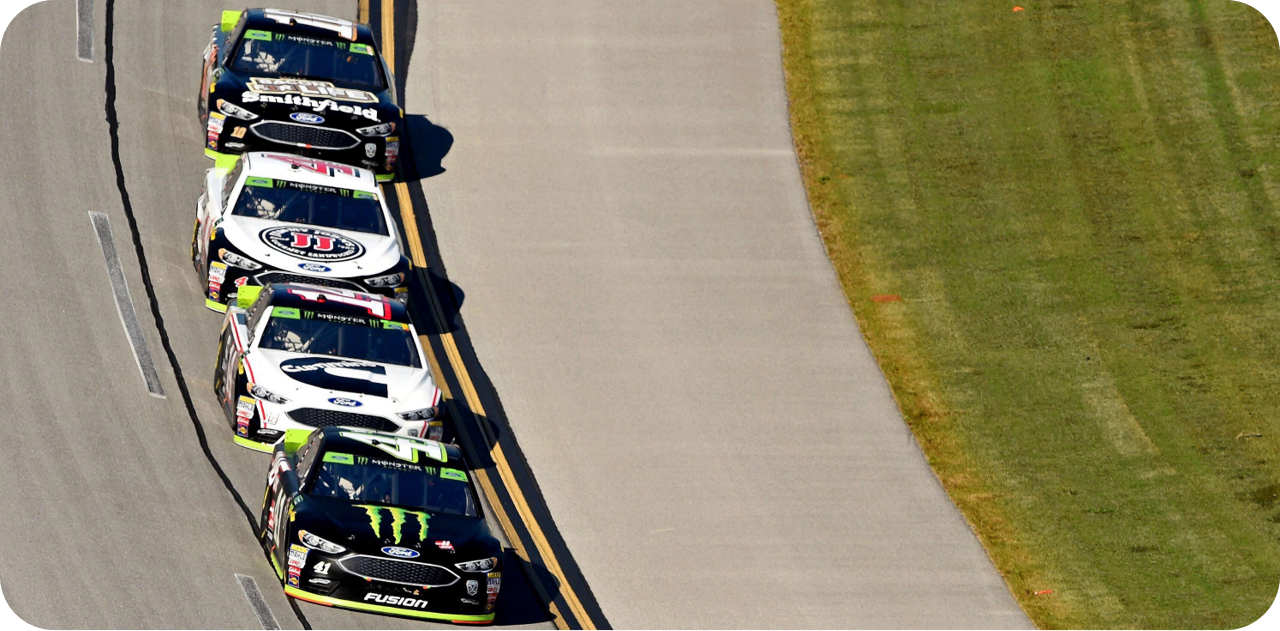
Racing around the Talladega Superspeedway in the Fall of 2018.
Short Track - These tracks are 1/2 mile to 1 mile in length. The cars are heavily grip limited, so lap time is all about how well the car can corner. At short tracks, downforce & sideforce are the most dominant contributors to speed.
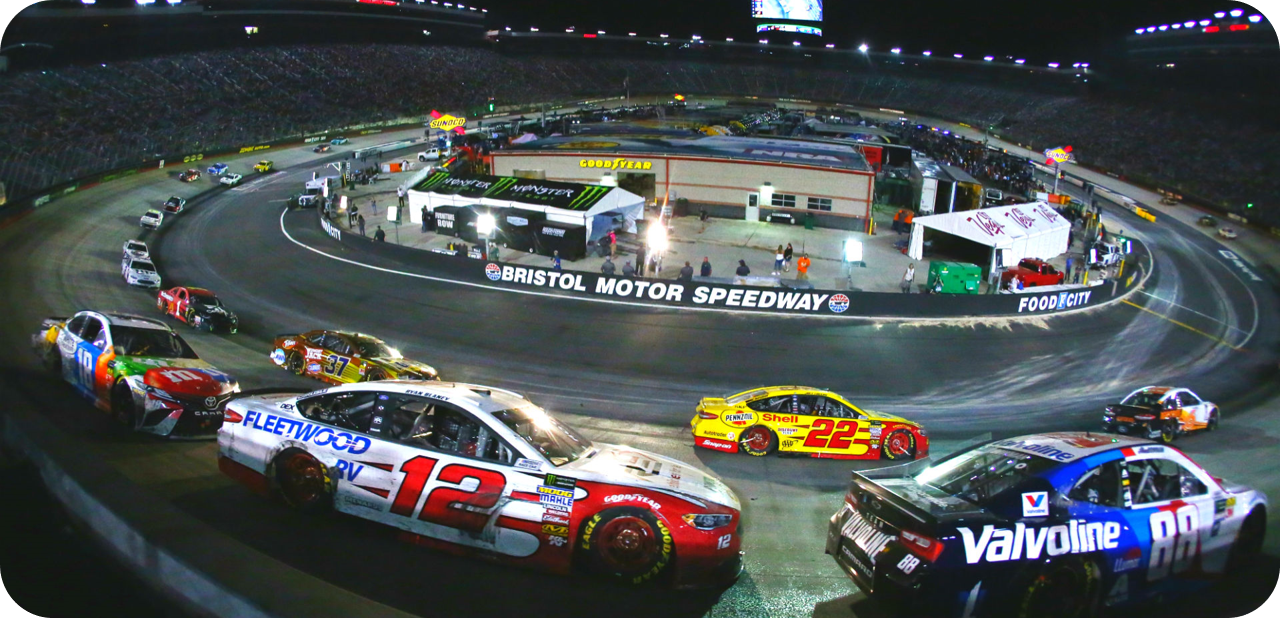
Bristol Motor Speedway in the Spring of 2017.
Intermediate - These tracks are 1.5 to 2 miles in length. The cars start out power/drag limited on fresh tires and are wide open on the throttle all the way around the track. However, eventually as the tires wear, the cars slowly become grip limited. This creates a balancing act between drag and downforce.
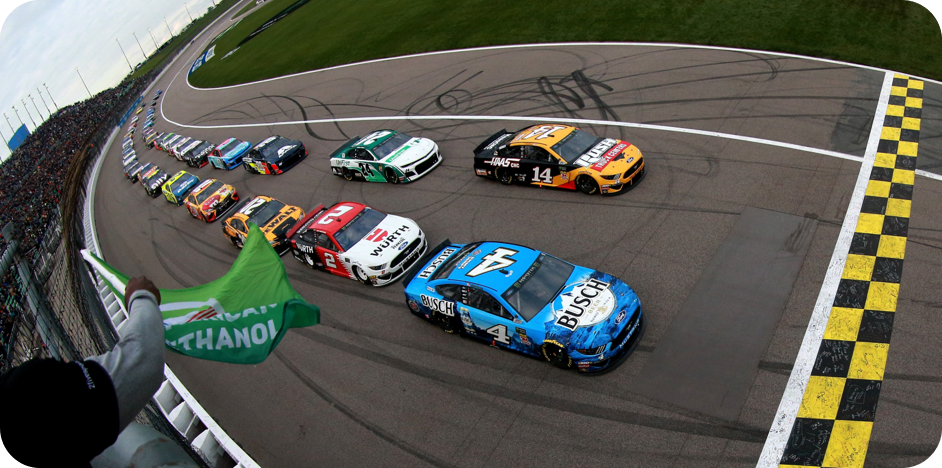
Taking the green flag at Kansas Speedway in 2020.
Road Course - Unlike most of the NASCAR calendar, these courses feature left and right hand corners. Aerodynamic grip is important, but so is mechanical grip, and the balance of the two makes car setup difficult.
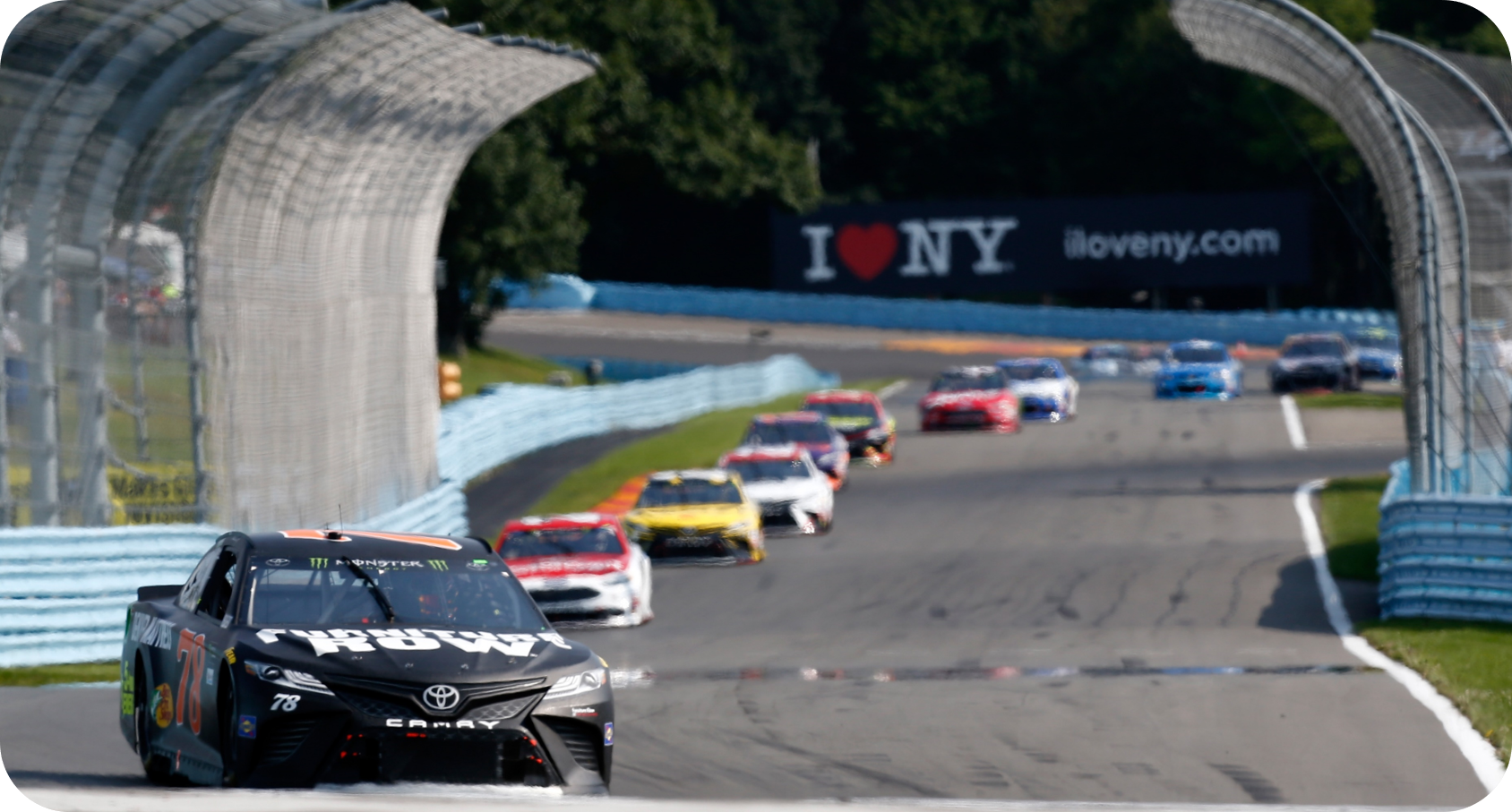
2017 Watkins Glen.
Dirt - The cars race on low grip surface with high yaw angles. Aerodynamics are at play, but are a secondary or tertiary factor at best.
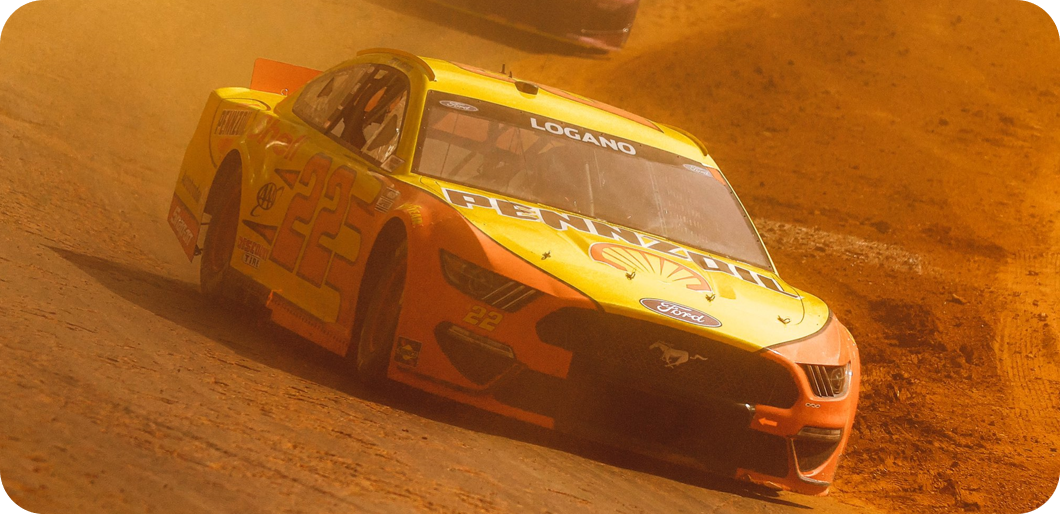
2021 Bristol Dirt Race.
While the cars generally look the same weekend to weekend, the unique requirements for each track type require cars to be custom built for each race. Each type of race has a custom specification of racecar, with a unique body, chassis, and suspension.
Inspection #
NASCAR implements a strict inspection process, providing teams very narrow margins to play within. This is done to prevent too much deviation from the intended shape of the cars, in hopes of keeping the racing competitive. However, even within this small window, there is considerable performance to be found by optimizing every detail to the nth degree.
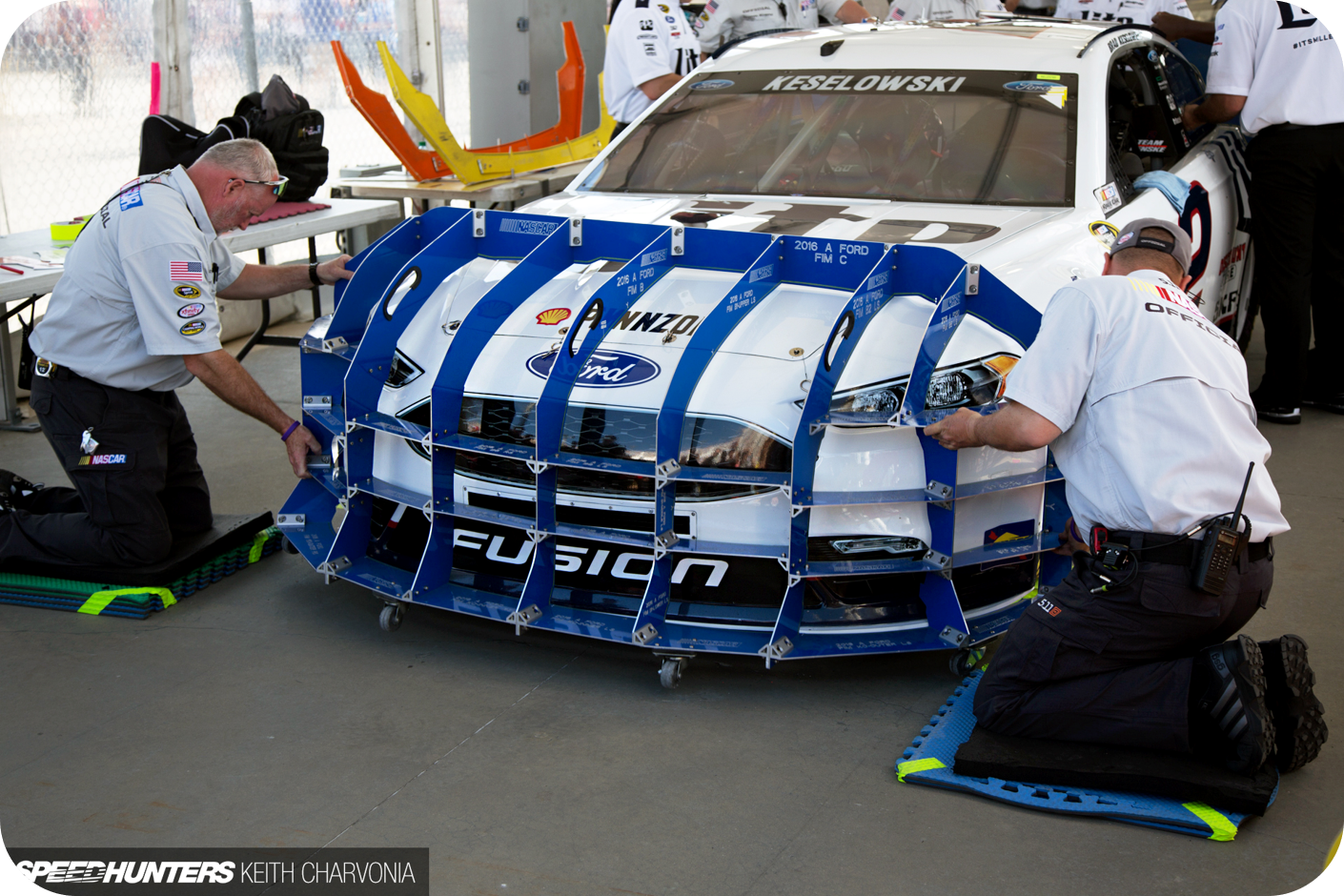
NASCAR officials inspecting the #2 car pre-race with physical templates, confirming that the body conforms to the required dimensions.

Hawkeye inspection system. The car is scanned, and a point cloud made of its body. This is compared to the intended shape, and discrepancies are highlighted. Photo courtesy of Joe Gibbs Racing.
Concluding Thoughts #
In short, NASCAR is the most competitive racing series in the world. Even though the working window is narrow, the rate of development can only be described as breakneck. After all, the team is only as good as its last performance.